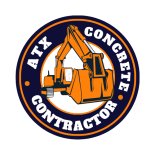Concrete, often considered a durable and robust material, can succumb to degradation over time when exposed to various elements. While it’s known for its strength, concrete is not impervious to damage. One of the most effective methods to safeguard its longevity and structural integrity is through concrete sealing. In this comprehensive guide, we delve into the significance of concrete sealing, its benefits, application methods, and why it’s essential in preserving the quality of concrete structures.
Understanding Concrete Decay
Before discussing the importance of sealing, it’s crucial to understand the factors contributing to concrete decay:
Moisture Intrusion: Water is one of the primary culprits behind concrete degradation. When water penetrates concrete, it can cause cracks, freeze-thaw damage, and erosion.
Chemical Exposure: Concrete can be exposed to various chemicals in the environment, such as salts, acids, and pollutants. These substances can cause corrosion and weaken the concrete.
Weathering Effects: Extreme weather conditions, including UV rays, heat, and frost, can lead to surface deterioration and discoloration of concrete.
The Role of Concrete Sealing
Concrete sealing acts as a protective barrier against these damaging elements. It involves applying a sealant to the surface of the concrete, forming a protective layer that prevents moisture, chemicals, and other harmful agents from penetrating the material.
Benefits of Concrete Sealing
Enhanced Durability: Concrete sealing significantly fortifies the inherent durability of concrete by reducing the risks of cracks and spalling, which could potentially weaken its structure. This process contributes to prolonged longevity and overall strength. Sealing prevents water intrusion, a significant cause of cracks, especially in regions experiencing freeze-thaw cycles. It also minimizes spalling, wherein layers of concrete flake off due to internal pressure from weather conditions or chemical exposure.
Water Resistance: Moisture poses a significant threat to concrete, leading to erosion, weakening, and surface damage. Sealed concrete surfaces offer a robust defense against moisture by creating a barrier that repels water. Sealants penetrate the surface, blocking water entry points, thereby reducing internal damage like cracks and erosion. This protective measure preserves the structural integrity of the concrete, increasing its lifespan and reducing repair needs.
Chemical Protection: Concrete often encounters various environmental chemicals, which can cause corrosion and degradation. Sealants act as a protective shield, preventing chemicals from permeating the concrete. This resistance to chemical exposure helps mitigate the risk of corrosion and structural damage, ensuring long-term preservation and minimizing maintenance expenses.
Weather Resistance: Extreme weather conditions can significantly impact concrete surfaces, leading to discoloration, surface deterioration, and structural damage. Sealing offers robust protection against weathering effects. Sealants shield the concrete from harmful UV rays, preventing discoloration and degradation due to prolonged exposure to sunlight. They also enhance the concrete’s resilience to temperature fluctuations, reducing the risk of thermal stress and subsequent surface damage. Moreover, sealed concrete mitigates the damaging effects of freeze-thaw cycles by repelling water, minimizing the risks of cracks and spalling.
Preservation of Aesthetics: Concrete sealing doesn’t just protect; it also plays a vital role in maintaining the aesthetic appeal of concrete surfaces. Sealants help retain the natural color of concrete, preventing discoloration or fading due to environmental factors. Additionally, sealed surfaces are less prone to staining, making them easier to clean and ensuring their visual appeal is maintained over time.
By combining these benefits, concrete sealing not only fortifies the structural integrity of concrete but also enhances its overall appearance, ensuring durability and visual appeal for an extended period. This process is a valuable investment in the long-term maintenance of concrete surfaces.
Types of Sealants
There are various types of sealants available, each catering to specific needs:
Penetrating Sealers: These sealers penetrate into the concrete, forming a chemical barrier that repels water and moisture.
Film-Forming Sealers: These sealers create a protective film on the concrete surface, offering excellent water and stain resistance.
Acrylic Sealers: Known for their affordability and ease of application, acrylic sealers provide good protection against water and UV rays.
Silane/Siloxane Sealers: These sealers offer deep penetration into the concrete, providing superior water repellency and breathability.
Application Methods
Concrete sealing requires careful application for optimal results:
Surface Preparation: Cleaning the concrete surface thoroughly by pressure washing or chemical cleaners to remove dirt, stains, and contaminants.
Sealant Application: Using brushes, rollers, or sprayers to apply the chosen sealant evenly across the surface.
Multiple Coats: Depending on the sealant type and manufacturer’s instructions, applying multiple coats may be necessary for complete protection.
Curing Time: Allowing sufficient time for the sealant to cure and form a strong protective layer.
Maintenance and Longevity
Regular maintenance is key to extending the life of sealed concrete. Periodic inspections, cleaning, and resealing, typically every few years, help maintain the effectiveness of the sealant and ensure continuous protection.
Conclusion
Concrete sealing is a proactive approach to preserving the strength, appearance, and longevity of concrete structures. By creating a protective barrier against moisture, chemicals, and weathering, sealing significantly reduces the risk of decay and enhances the durability of concrete. Understanding the importance of sealing and implementing proper application and maintenance practices is vital in safeguarding concrete against the effects of time and environmental factors.
